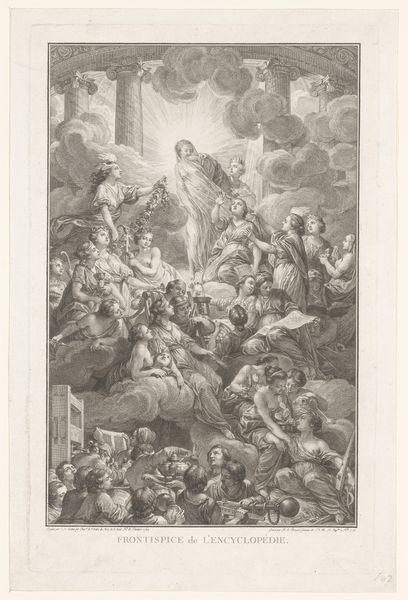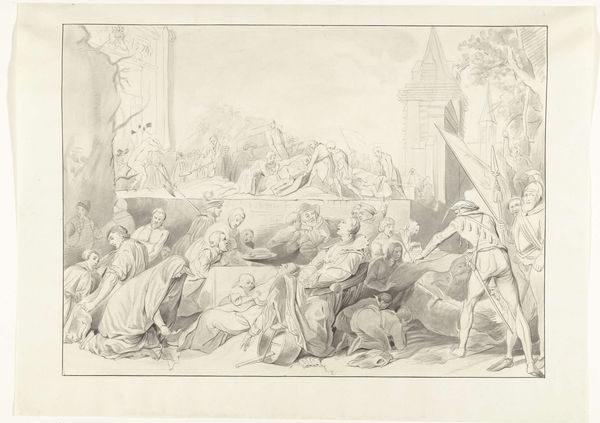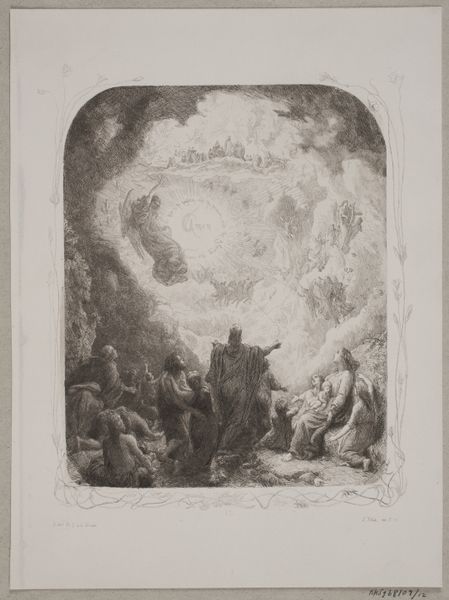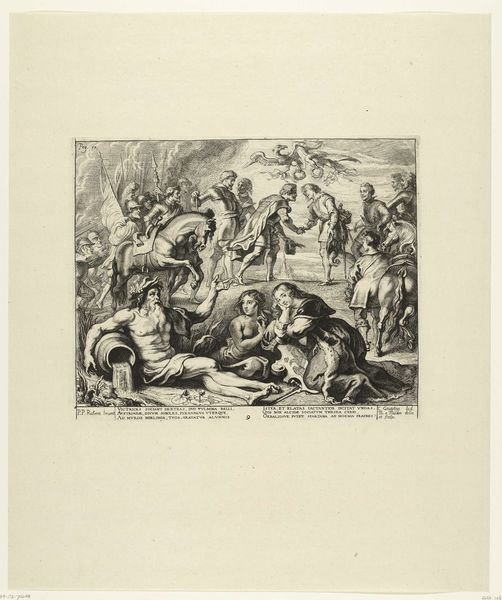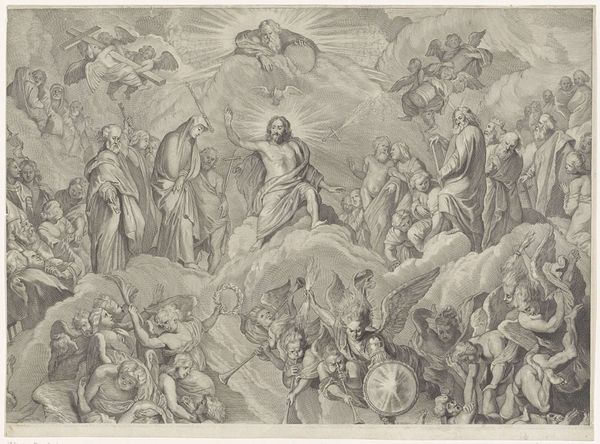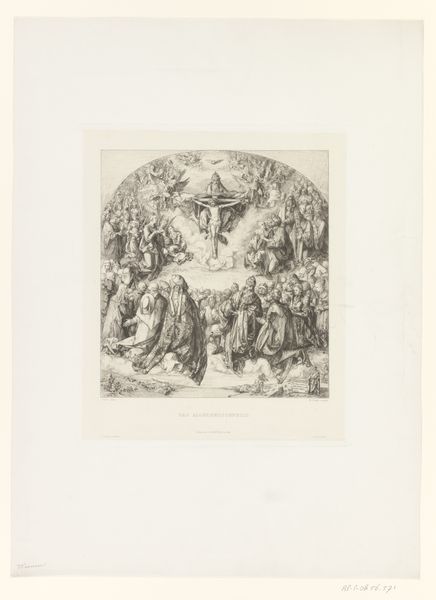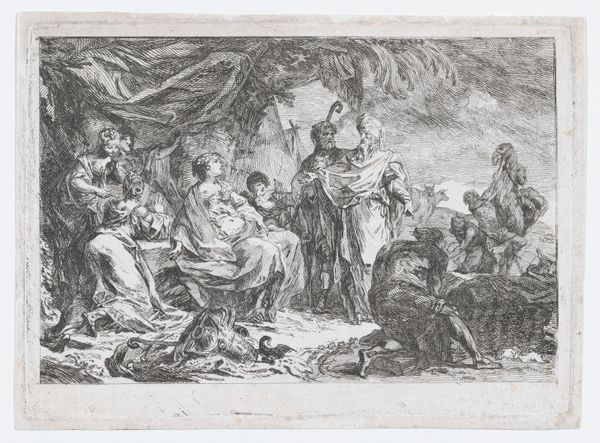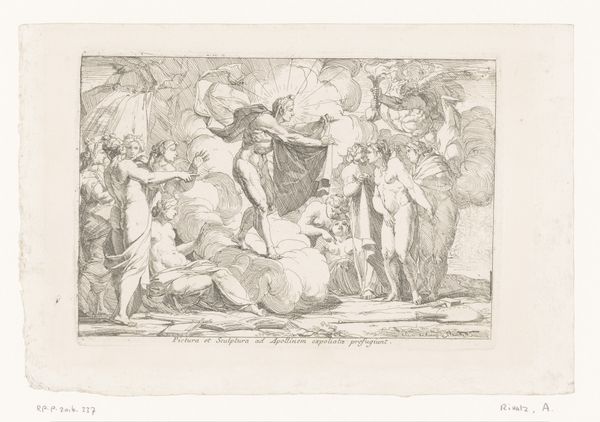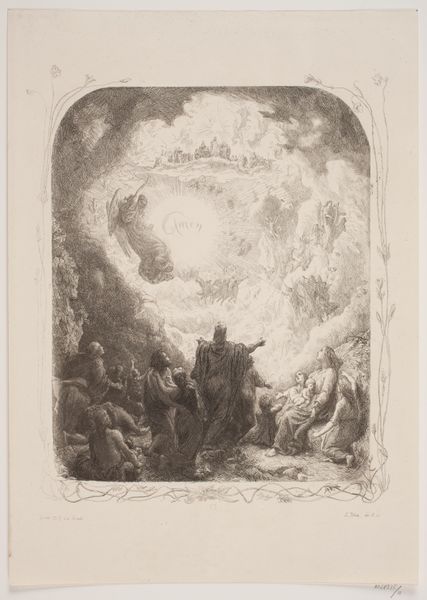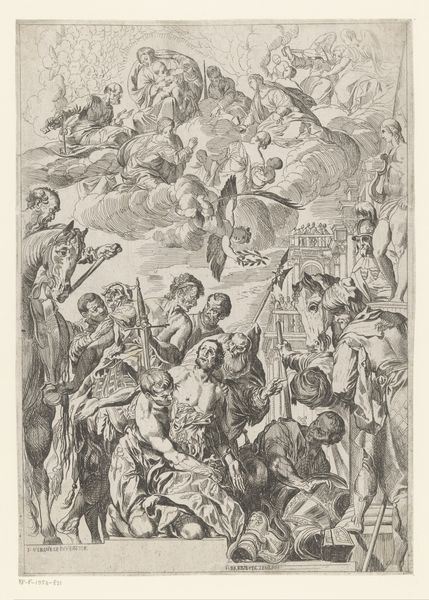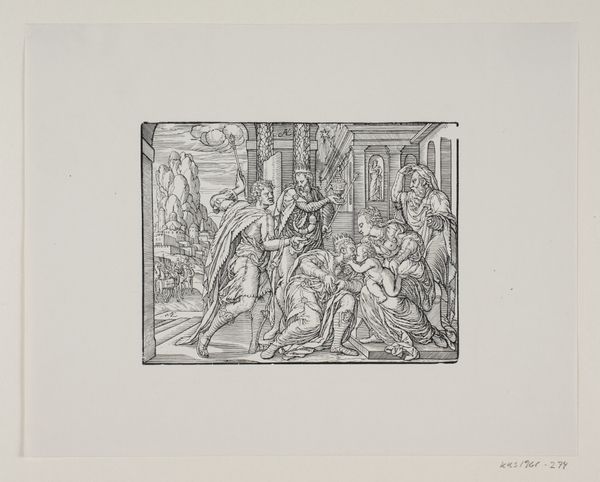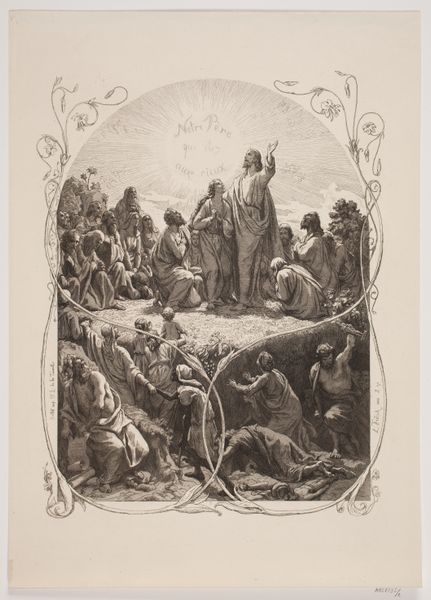
Gevolgen van de Dood van de eerstgeborenen (Ex.11:7-8) 1814 - 1870
0:00
0:00
print, engraving
#
narrative-art
# print
#
figuration
#
history-painting
#
engraving
Dimensions: height 564 mm, width 673 mm
Copyright: Rijks Museum: Open Domain
Curator: Julius Cäsar Thäter created this engraving, entitled "Gevolgen van de Dood van de eerstgeborenen," sometime between 1814 and 1870. It depicts, as the title suggests, the consequences of the death of the firstborn from the book of Exodus. Editor: Immediately, I’m struck by how meticulously rendered this image is. The tonal range, achieved through engraving, gives it a somber, almost ghostly quality. The composition, crowded as it is, leads the eye upward. Curator: The ascent is deliberate. Notice how the earthly chaos of the plague’s devastation at the bottom gives way to scenes of mourning, transition, and ultimately, celestial judgment and redemption at the very top. It is a cultural memory of a cataclysmic divine event that deeply marked religious tradition. Editor: Indeed. The pyramid-like structure forces a dialogue between the mundane suffering and a sense of hope from on high. Even within the limitations of a monochromatic print, there’s a dynamism achieved through the swirling figures. Look at the subtle cross-hatching used to create depth and shadow. Curator: Symbolically, that light emanating from the celestial figures suggests both divine wrath and promise. This resonates powerfully within the historical context of religious art – the suffering, repentance, and the subsequent act of liberation through divine intervention. It becomes part of a collective experience, repeated and reshaped through visual art over centuries. Editor: What's also interesting is the distribution of detail. While figures are densely packed together, almost writhing, in the middle ground, the divine realm is rendered with a smoother, less frenetic texture, visually echoing that transition from chaos to resolution. Curator: Precisely. It is this intersection of symbolism and structure that lends this engraving its emotional and narrative power. Seeing the echoes of human struggles immortalized like this also creates an empathetic dialogue with people across eras. Editor: Well, observing the delicate line work reminds me that even in representing such grand narratives, artistic control relies on a deeply focused observation and construction of form and how each carefully placed line serves the larger structure. It reveals that great meaning is rooted in form. Curator: I will remember the careful crafting behind such an intense image, how art shapes and maintains our engagement with important stories from the past. Editor: And I'll continue to appreciate how these elements create an impactful, expressive viewing experience that extends beyond the narrative it's chosen to represent.
Comments
No comments
Be the first to comment and join the conversation on the ultimate creative platform.
